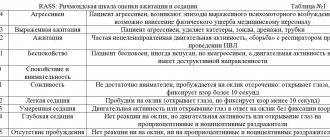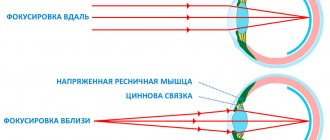What is a vegetative crisis, how is it classified?
A vegetative crisis is an extreme form of expression of VSD (vegetative-vascular dystonia), which is characterized by a disorder of the nervous system. In the International System of Classification of Diseases (ICD), this pathology is coded F 41.0.
The classification of vegetative crises is carried out according to several types, which is determined by the severity of the disease and the totality of the existing symptoms.
Depending on the severity of the course, a vegetative crisis can be:
- light – lasts a maximum of half an hour. Accompanied by minor but characteristic violations;
- medium – lasts about an hour. This form is characterized by multiple somatic disorders with the further formation of asthenia (neuropsychic weakness), which persists throughout the day;
- severe – lasting more than an hour. The appearance of various disorders is noted, accompanied by various paroxysms and the subsequent development of asthenia, which persists for several days.
In modern medicine, vegetative crises are also divided into 4 types in accordance with the symptoms that appear. According to this classification they are:
- sympathetic-adrenaline. Manifested by severe anxiety, discomfort in the heart, rapid pulse and high blood pressure;
- vagoinsular. The patient feels his heart sink, then notes the onset of weakness, lack of air, and a decrease in blood pressure;
- vegetative-vestibular. In this case, the person complains of dizziness, vomiting, which appears with a sudden change in posture: turning the head, bending over and other movements;
- hyperventilating. Manifests itself in the form of rapid breathing, increased blood pressure, dizziness, and muscle tone.
The occurrence of any vegetative crisis is acute and unexpected for a person. Sometimes it can appear at night. But such a phenomenon is not dangerous and does not threaten the patient’s life. Although at first glance the clinical picture is quite scary, the attacks always stop, so you should not be afraid of them.
Classification
Vegetative crisis does not have a single classification. It is usually divided into types, which have varying degrees of severity and symptoms, which in turn are related to blood pressure readings and the functioning of the cardiovascular system.
Vegetative crisis is divided into several types with varying degrees of severity. The lung is characterized by short attacks of 10-15 minutes, with pronounced disorders of the autonomic system and manifestations of a monosymptomatic nature, with no post-crisis asthenia. Attacks of moderate severity can last from 15-20 minutes to an hour, while there are polysymptomatic manifestations and post-crisis asthenia, which last for 24-36 hours. During a severe attack, a combination of polysymptomatic crises is observed along with convulsions and hyperkinesis; this condition lasts more than one hour and is accompanied by multi-day asthenia.
Based on symptoms, vegetative crisis is divided into: vagoinsular, sympathoadrenal and mixed.
Why does a vegetative crisis develop?
At present, the sources of this problem have not been fully investigated. Although some factors have been identified that can provoke the onset of a vegetative crisis. These include:
- tendency at the genetic level;
- hormonal imbalances (menopause, pregnancy, abortion);
- frequent stress, mental disorders (death of a loved one, difficulties with work or personal life);
- endocrinological pathologies;
- disturbances in the functions of the central nervous system;
- heavy physical activity;
- alcohol addiction;
- long-term treatment with potent drugs.
Scientists and psychotherapists have created a general description of subjects predisposed to this disease. Representatives of the weaker sex are more susceptible to vegetative crisis, who are characterized by the presence of:
- artistry;
- instability of thoughts;
- inclinations to dramatize any situation;
- constant expectation of troubles, fear of them;
- inadequate response to criticism;
- constant desire to improve your own figure.
It is precisely such people who are prone to developing unreasonable panic attacks, in which there is a feeling of anxiety and fear. Moreover, somatic symptoms are pronounced.
Signs
The first symptom of the onset of a vegetative crisis is a strong feeling of anxiety that appears unexpectedly and without cause. It is impossible to predict what will trigger the next attack, which is why the patient is constantly in a feeling of fear.
During the development of an attack of vegetative crisis, adrenaline is sharply released into the bloodstream. As a result, a person feels the appearance of:
- rapid pulsation;
- lack of air;
- acute headache;
- tremors in the limbs;
- chills, increased sweating;
- discomfort in the heart area;
- severe weakness;
- dizziness;
- presyncope;
- fear of dying.
During an unexpected attack, a person may experience the development of several of the above symptoms, or all of them at the same time. The peak of the attack occurs after 10 minutes; when it ends, the patient begins to feel lethargic and drowsy; over time, the condition returns to normal without any complications.
During a vegetative crisis, the patient experiences severe stress. He develops a fear of a relapse, which contributes to the development of a second attack even under minor negative conditions. Another attack can be triggered by an unfamiliar environment, being in a confined space, or the threat of some kind of penalty.
Symptoms
A vegetative crisis most often first appears at a certain age - usually 20-30 years. But there have been cases of the disease being diagnosed in children under 15 years of age and elderly people after 65. The main category of people exposed to attacks of vegetative crisis are women. In men, this disease is diagnosed 2-3 times less often than in the fairer sex. During panic attacks, the following clinical picture usually emerges: ⅔ of all symptoms are vegetative, the rest are emotional-affective disorders. Each type of vegetative crisis has its own symptoms, they depend on the severity of the panic disorder and are determined using a special scale.
The following symptoms are characteristic of a sympathoadrenal crisis: disruption of the heart and rapid heartbeat, pain and pulsation in the head, fever, pale skin, chills, an inexplicable feeling of fear. It ends suddenly, with a large amount of urine being released. After this, an asthenic state begins to develop.
Symptoms of a vagoinsular crisis are as follows: a person begins to feel a lack of air, he has a feeling of suffocation, shortness of breath, the pulse becomes rare, the heart works intermittently, the skin becomes hyperemic, pain appears in the stomach, intestinal motility increases, etc.
The mixed type of vegetative crisis combines the characteristics of the species described earlier, i.e. sympathoadrenal and vagoinsular types. The main symptoms of a vegetative crisis of this type are attacks of causeless panic, anxiety or fear, to which are added several manifestations of a particular disease. In this case, human psychosomatics produces such sensations as depersonalization, derealization, fear of uncontrollable actions, loss of reason, and fear of death.
Various reasons can lead to the onset of a vegetative crisis in a person. It can be the result of prolonged stress or neurosis, postpartum trauma, or head trauma. A vegetative crisis can also be caused by disturbances in the functioning of the central nervous system, and conditions such as premenstrual syndrome in women, urolithiasis, puberty, etc. Uncontrolled use of any medications can also provoke this disease.
Diagnostic methods
Determining the presence of a vegetative crisis is quite difficult even for an experienced specialist. To confirm the diagnosis, a comprehensive diagnosis is necessary, which includes a medical examination, assessment of reflex functions, ECG, pulse check, blood pressure, etc. Only after receiving the results can we make assumptions about the presence of a vegetative crisis in the patient. The disease can be accurately diagnosed only when the attack is over by excluding the following ailments and conditions:
- cardiac dysfunction - requires 24-hour cardiac monitoring, stress ECG, and cardiac ultrasound;
- stroke, brain tumors - CT and MRI are required;
- vascular crisis - encephalography and CT are performed;
- bronchial asthma – it is necessary to carry out breathing tests and skin tests to determine allergies;
- internal blood loss - you need an ultrasound of the peritoneal and pelvic organs;
- hypertensive vegetative crisis - CT or MRI is performed;
- mental disorders - examined by a psychiatrist.
When all of the listed pathologies are excluded and it is determined that the peak of the crisis occurs 10 minutes after the onset, and in addition an anxious feeling or deep-seated fear appears, the patient is diagnosed with a vegetative-vascular crisis.
In some cases, a similar diagnosis is given to children. The cause of this phenomenon may be psychological trauma or stress. As a rule, the development of a vegetative crisis in childhood is caused by quarrels in the family.
Diagnosis and treatment
Diagnosing a vegetative crisis in modern medicine does not pose any particular difficulties. The most important thing is to exclude serious mental, somatic or endocrine diseases.
There are three diagnostic criteria for a vegetative crisis:
- Time limitation and paroxysmal nature
- Presence of multisystem disorders of the autonomic system
- Presence of states of emotional and affective nature
Modern medicine uses a variety of measures to treat vegetative crisis: psychotherapeutic, pharmacological and psychosocial. The best and most effective way to treat this disease is considered to be taking psychotropic medications coupled with psychotherapy sessions.
Possible consequences
The vegetative crisis itself does not cause harm to health, but if attacks occur frequently, this is fraught with serious consequences. The patient begins to suffer from numerous phobias: fear of dying, being in a confined space, etc. Due to frequent attacks, heart function may be impaired, and sudden changes in blood pressure may develop. In addition, problems with the digestive organs and nerves may appear.
Fear of developing another attack can affect personal characteristics. Often such people try to communicate less with others, which is why they become withdrawn, and sometimes they may develop inappropriate behavior.
Causes
Among the factors that provoke malaise, scientists identify the following:
- Arachnoiditis is a serous inflammation of the arachnoid membrane of the brain or spinal cord.
- Hypertension (or persistent increase in blood pressure with readings of more than 140/90 mm Hg).
- Atherosclerosis. This chronic arterial disease is formed due to lipid metabolism disorders. It is accompanied by the deposition of cholesterol in the blood vessels.
- Labyrinthitis. That is, inflammatory damage to the structures of the inner ear, which occurs after infection or is the result of injury.
- Pathology of the central and peripheral nervous system.
- Hemodynamic disorders and other ailments.
How to treat manifestations of a vegetative crisis
To treat a vegetative crisis, an integrated approach is used, which includes not only medications. In accordance with the patient’s complaints, the doctor determines the duration of the attacks, the severity of the symptoms, and only then prescribes medications. In addition, the patient must learn to overcome attacks independently.
Drug treatment
For this disease, symptomatic therapy is prescribed. To stop an attack, the following may be prescribed:
- for cardiac dysfunction - Valocordin, Corvalol or Anaprilina;
- to eliminate anxiety - Relanium or Clonozepam;
- A course of treatment with antidepressants under medical supervision is also prescribed.
In addition, it will be necessary to treat somatic pathologies and abnormalities in the functions of the central nervous system identified during the diagnosis. The same actions can be used to stop an attack of vegetative crisis.
Non-drug treatment
A person diagnosed with a vegetative crisis must learn to identify the symptoms of an approaching attack and overcome it on his own. Breathing exercises are suitable to eliminate the problem. With proper and slow breathing, a large amount of oxygen enters the body, which helps reduce the severity of symptoms that appear during an attack. The supply of carbon dioxide to the body is also effective. For this purpose, you can use a paper bag to exhale and inhale into it.
If there is a suspicion that an attack has begun, the patient is advised to change the environment. To do this, you need to leave the room or transport, try to pay attention to the surrounding nature to distract your thoughts.
Preventive actions
There is no specific prevention that will help prevent the formation of the disease. Although there are recommendations on how to help the body quickly overcome attacks. To do this you will need:
- maintaining a healthy lifestyle, giving up alcohol;
- in the moments between attacks, you can take folk remedies that have a sedative effect (valerian, peony, motherwort in the form of tincture);
- Periodically visit a psychiatrist to develop stress resistance.
If you wish, you can overcome an attack of vegetative crisis. However, this will require strict adherence to your doctor's advice. Timely therapy is a serious prerequisite for eliminating the problem.
To undergo diagnostics and prescribe a course of treatment, contact our medical (formerly NDC) on Gakkelevskaya 33. Click the “SIGN UP” button, get advice from our specialists and come to us. We will help you cope with the disease.
Symptoms and causes
To understand the cause of this pathology, it is important to understand the following.
The term “vascular crisis” combines two pathologies:
- hyperkenetic crisis, when vasospasm occurs and pressure rises, but the volume of circulating blood remains unchanged;
- hypokinetic crisis, or water-salt crisis, in which the volume of blood inside the vessels increases, swelling of various areas of the body is formed.
Make an appointment with a specialist without queues, at a convenient time
Sign up
+7
In addition, the disease can be classified into types depending on the organs affected: regional (angiotrophoneurosis, migraine) and systemic. Some forms of crisis, such as cerebral vascular crisis, require urgent medical attention and emergency hospitalization. Any crisis is an acute hemodynamic disturbance, lasting from several minutes to 2 hours or more.
The course of filling blood vessels changes dramatically, which disrupts peripheral and central blood circulation. The crisis manifests itself in the form of an attack. The specific symptoms depend on the type of disease. If this is a cerebral attack, the patient suddenly experiences headache and tinnitus. Dizziness is added, nausea and vomiting, and loss of coordination may occur. Blood pressure increases. A hyperventilation attack is characterized by difficulty breathing, muscle tension in the feet, hands, and forearms.








